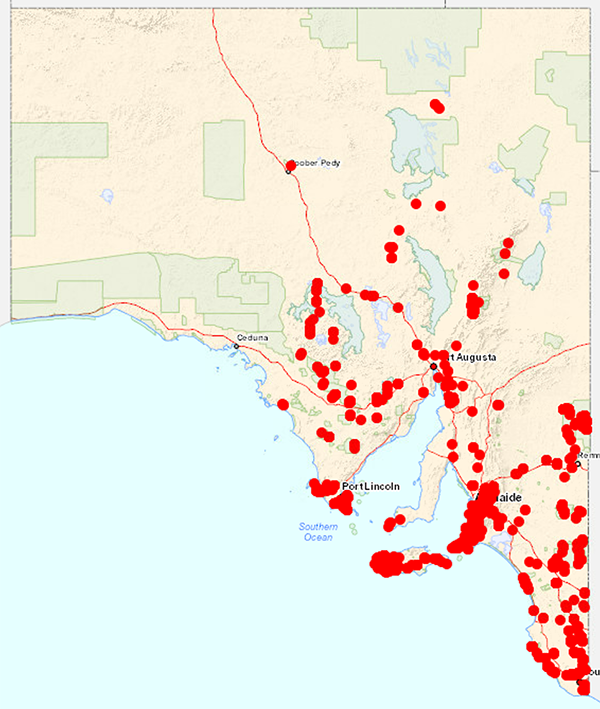
Pam Catcheside woking in a make-shift lab at Flinders Chase National Park in 2010. Photo: D. Catcheside.
Over the last few months, our colleagues at DEW’s Biodiversity Data Team have been processing over 5,500 fungi records to upload them to the Biological Databases of South Australia (BDBSA). This has well over tripled the number of fungi records and expanded the available fungi taxonomy in BDBSA.
The data uploaded has largely come from Pam Catcheside’s huge project to extensively collect and describe South Australian macrofungi. Pam retrained as a mycologist after having taught biology in schools in the UK and Adelaide for decades. Since then, she has studied the macrofungi and has described many new species as an Honorary Research Associate of the State Herbarium of South Australia.
The project to incorporate Pam’s data into BDBSA was initiated when the Murraylands and Riverland Landscape Board was updating their ‘Find Our Fungi’ project – a citizen science project that provides information on target species in the region and encourages the community to upload records of these species to the FungiMap Project on iNaturalist. As Board staff were researching and describing the locations of the target species, they realised that none of Pam Catcheside’s records were showing up on BDBSA. Pam had been diligently storing those records in a separate database, and the Board was able to fund the task of reformatting it for inclusion in BDBSA. Critical support provided by the State Herbarium and the Science and Information staff resulted in the quality assurance of reformatted data and in the inclusion of 420 new species of fungi referenced in BDBSA.
If you have any questions regarding the data contact the Bio data support team at DEWbiodatasupport@sa.gov.au
BDBSA data-sets are available through the Department’s NatureMaps application.
Compiled by Lily Mackintosh, DEW Biodiversity Systems Officer

